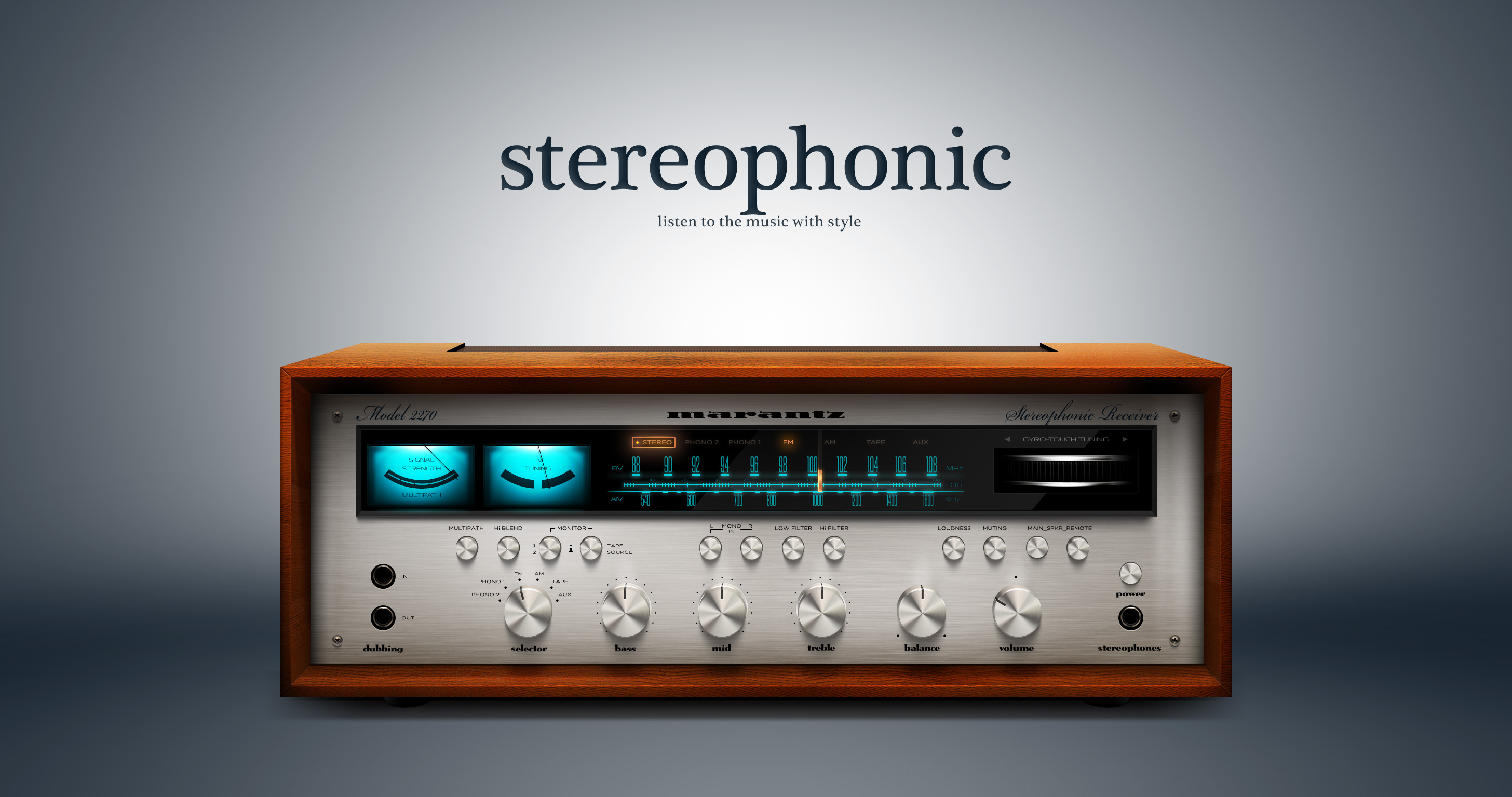Stereophonic Sound

Stereophonic sound, commonly known as stereo, is a method of sound reproduction that creates an illusion of a three-dimensional sound space using two or more independent audio channels.
The concept of stereophonic sound is based on the human auditory system, which processes sound from both ears to determine the direction and distance of the sound source. By presenting different audio signals to each ear, stereophonic sound systems aim to recreate this natural spatial perception.
Components of Stereophonic Sound Systems
A typical stereophonic sound system consists of the following components:
- Audio Source: The source of the audio signal, such as a CD player, streaming service, or turntable.
- Stereo Amplifier: An electronic device that amplifies the audio signal and provides power to the speakers.
- Speakers: Two or more loudspeakers that reproduce the amplified audio signal, creating the illusion of sound coming from different directions.
Advantages of Stereophonic Sound over Mono Sound
- Enhanced Spatial Perception: Stereo sound provides a more immersive and realistic listening experience by creating a sense of space and depth.
- Improved Sound Localization: Stereo sound allows listeners to pinpoint the location of sound sources more accurately, making it ideal for applications such as gaming and home theater.
- Increased Clarity and Separation: By separating different sounds into different channels, stereo sound reduces interference and improves the clarity and separation of instruments and vocals.
Limitations of Stereophonic Sound
- Equipment Requirements: Stereo sound systems require additional equipment compared to mono sound systems, including two or more speakers and a stereo amplifier.
- Room Acoustics: The acoustics of the listening room can affect the quality of stereophonic sound, as reflections and reverberations can interfere with the intended spatial effects.
- Compatibility Issues: Some older audio equipment and media may not support stereo sound, limiting the availability of stereo content.
Applications of Stereophonic Sound

Stereophonic sound has revolutionized the entertainment industry, providing an immersive and engaging experience for listeners. Its applications extend beyond music production and recording, reaching into the realms of film, television, and video games.
Music Production and Recording
In music production, stereophonic sound allows for precise placement of instruments and vocals within the soundstage. This creates a sense of space and depth, enhancing the listening experience. Engineers can pan instruments from left to right, creating a wide stereo image that mimics the placement of musicians on a stage. Stereophonic recording also enables the use of panning effects, such as panning a guitar solo from one side to the other, adding movement and dynamics to the mix.
Film, Television, and Video Games
Stereophonic sound plays a crucial role in creating an immersive cinematic experience. In film, it allows for the precise placement of sound effects and dialogue, enhancing the realism and impact of the visuals. For example, in a car chase scene, the sound of screeching tires can be panned from left to right, creating the illusion of the car moving across the screen. In television, stereophonic sound enhances the dialogue clarity and intelligibility, ensuring that viewers can easily follow the conversations.
In video games, stereophonic sound provides a competitive advantage by allowing players to pinpoint the location of opponents based on sound cues. First-person shooters, for instance, often use stereophonic sound to create a realistic soundscape where players can hear footsteps and gunshots from different directions. This immersive audio environment enhances the gameplay and adds to the overall thrill of the experience.
Technical Aspects of Stereophonic Sound
Stereophonic sound, a captivating advancement in audio technology, introduces the illusion of three-dimensional sound, immersing listeners in a symphony of sonic sensations. To unravel the technical intricacies that underpin this auditory experience, we embark on an exploration of its various formats, signal pathways, and standardized specifications.
Comparison of Stereophonic Sound Formats
A myriad of stereophonic sound formats grace the audio landscape, each boasting unique characteristics that cater to diverse listening preferences. To facilitate an informed comparison, the following table juxtaposes key attributes of notable formats:
| Format | Channel Configuration | Encoding | Bitrate |
|—|—|—|—|
| Two-Channel Stereo | Left and Right | PCM, MP3, AAC | 128-320 kbps |
| Quadraphonic Sound | Four Channels (Front Left, Front Right, Rear Left, Rear Right) | Quadraphonic, Dolby Pro Logic | 192-384 kbps |
| Surround Sound 5.1 | Six Channels (Front Left, Front Right, Center, Rear Left, Rear Right, Subwoofer) | Dolby Digital, DTS | 640 kbps |
| Surround Sound 7.1 | Eight Channels (Front Left, Front Right, Center, Rear Left, Rear Right, Side Left, Side Right, Subwoofer) | Dolby TrueHD, DTS-HD Master Audio | 1.5-2.4 Mbps |
Signal Path of a Stereophonic Sound System
The journey of stereophonic sound from source to speakers involves a carefully orchestrated signal path. This intricate network consists of the following components:
1. Sound Source: The origin of the sound, such as a microphone or musical instrument.
2. Microphone: Converts sound waves into electrical signals.
3. Preamplifier: Amplifies the microphone’s signal, adjusting its level and impedance.
4. Mixer: Combines multiple audio signals, allowing for level adjustments and panning.
5. Power Amplifier: Amplifies the mixer’s output, providing sufficient power to drive the speakers.
6. Speakers: Transduce the electrical signals back into sound waves, delivering the auditory experience to the listener.
Specifications and Standards of Stereophonic Sound
To ensure consistency and compatibility across stereophonic sound systems, a set of specifications and standards has been established. These parameters govern aspects such as:
| Specification | Description |
|—|—|
| Sampling Rate | The number of samples taken per second, typically 44.1 kHz or 48 kHz. |
| Bit Depth | The number of bits used to represent each sample, typically 16 or 24 bits. |
| Channel Configuration | The number and arrangement of audio channels, such as 2.0 (stereo) or 5.1 (surround sound). |
| Dynamic Range | The difference between the loudest and softest sounds that can be reproduced. |
| Frequency Response | The range of frequencies that can be reproduced, typically 20 Hz to 20 kHz. |